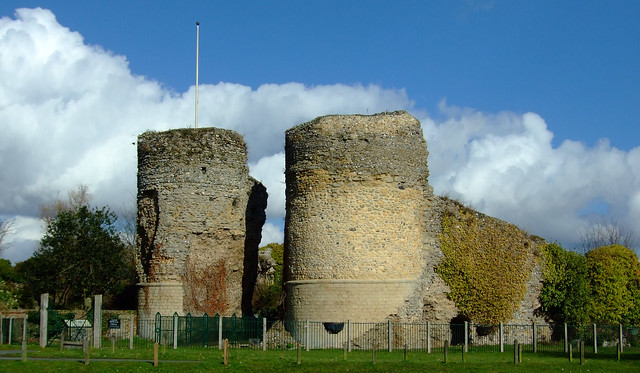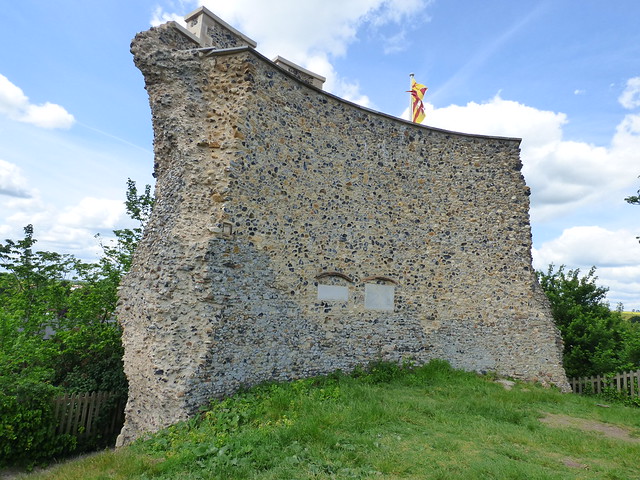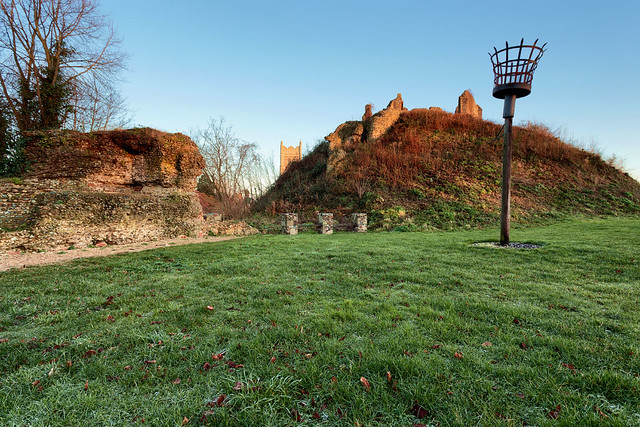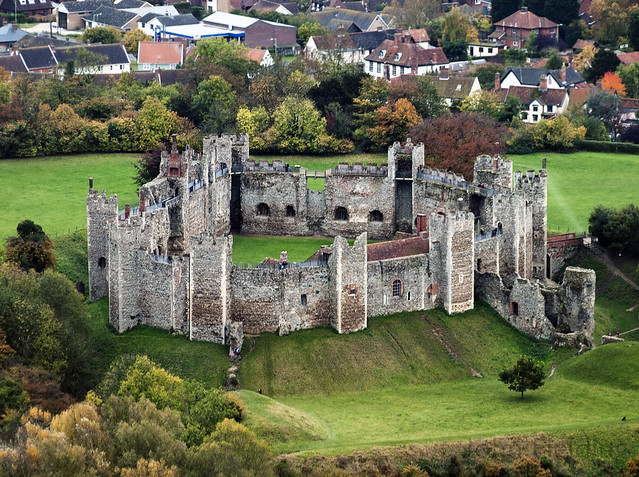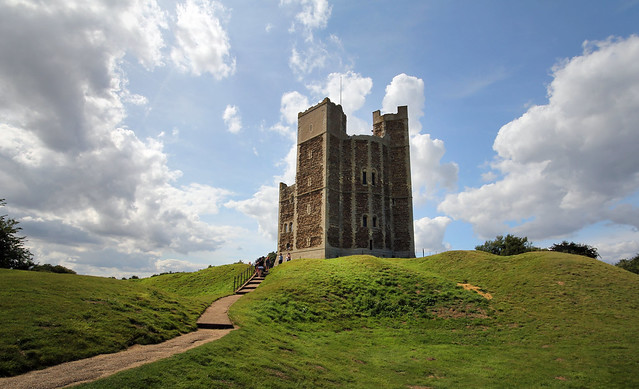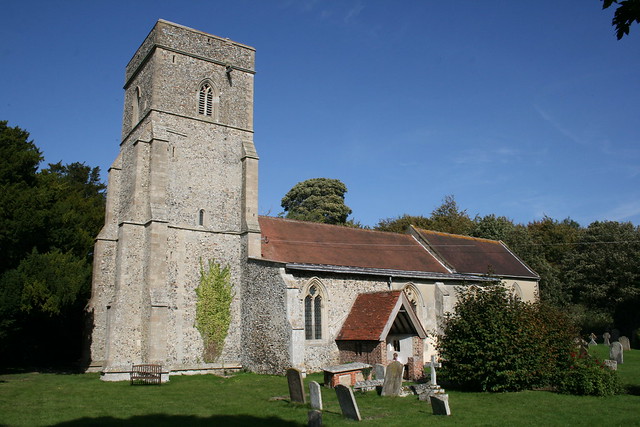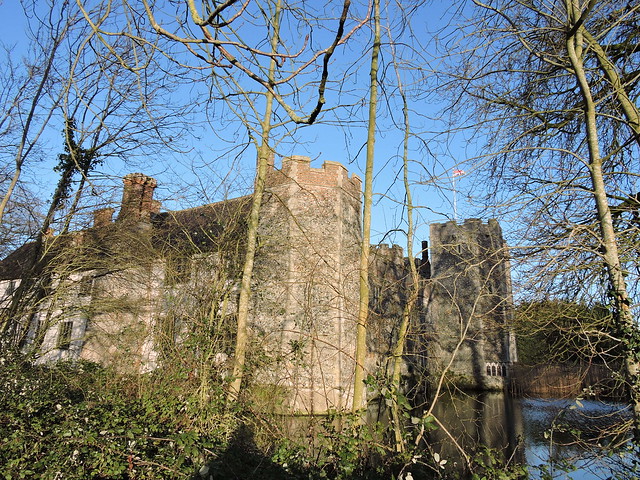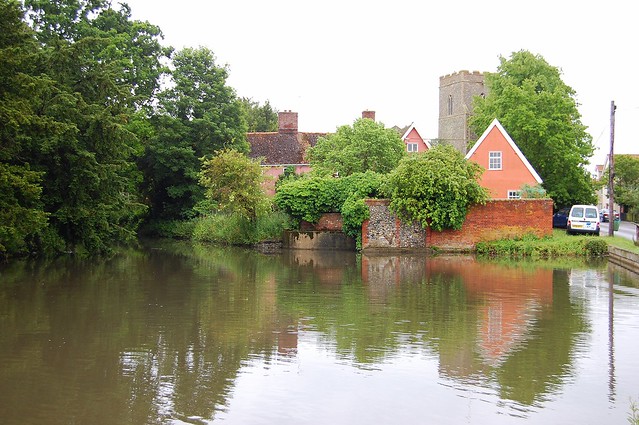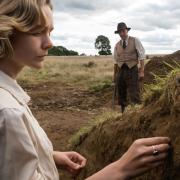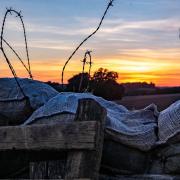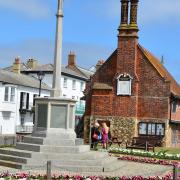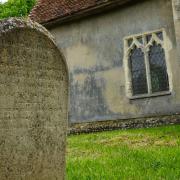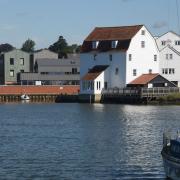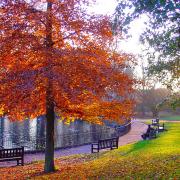There’s nowhere better to experience the military, political and cultural history of Suffolk than the many castles that stand proudly throughout the county. Here are 9 you should pay a visit
After his successful conquest of England in 1066, William the Conqueror awarded the Bigods lands and manors across East Anglia for their contributions to the invasion. Hugh Bigod became the leading member of the family in 1120 and quickly began rebelling against the crown with Bungay as his base.
Decades later, Hugh began construction on his keep, decking out his fortress with walls three to five metres thick and around 33 metres high. The castle, protected by the natural curve of the River Waveney, remained a stronghold right up until his unsuccessful revolt of 1174, after which Hugh fled to Syria and the castle was largely left to ruin.
It stayed in this state until Leonard Cane began repairs in 1934 as his careful renovations revealed many features thought lost to time and today the castle is open to the public free of charge.
2) Clare Castle
Only a few structures now remain of this south-western Suffolk castle but for nearly 300 years following its creation, it was a flourishing motte and bailey. The man behind its building – Richard Fitz Gilbert de Clare – was one of the wealthiest non-royals in the country and its 80-foot motte one of the tallest in the country, setting it up for its enduring success.
The castle benefited from Suffolk’s prosperity throughout the Middle Ages and its owners enjoyed wildly lavish lifestyles as a result. The falconers, goldsmiths, knights and fine food purveyors were gone by the 16th century, however, as it sadly fell into ruin.
Building of the Great Eastern Railway in the 19th and 20th centuries further added to its dilapidation and now the castle is at the centre of a beautiful country park. Have a read up on the castle’s documentary evidence before you go to get a feel of the place at its peak.
3) Eye Castle
First built by William Malet, a companion of William the Conqueror, on a raised island naturally surrounded by marshlands, this motte and bailey is notable for being one of only two castles recorded in the Domesday Book as being a source of revenue due to its thriving market.
Despite changing hands many times throughout the 12th and 13th centuries, it remained a notable stronghold as Britain suffered anarchy and rebellion at the hands of warring nobles. Following the Second Barons War, however, it fell out of importance and was eventually used as a regional jail while there has also been a school and a windmill on the site.
Most recently it was a private residence – known as Kerrison’s Folly - to the batman who saved Sir Edward Kerrison’s life during the Battle of Waterloo in 1815 and it is the site’s most prominent structure remaining today. For unparalleled views of Eye, the parish church and the surrounding Suffolk countryside, it’s well worth making the short but steep walk up Castle Hill.
When the Bigod family built yet another castle in Suffolk to increase their dominion over the county, they probably didn’t expect it to become the subject of the latest top ten single by local superstar Ed Sheeran. The success of the song ‘Castle on the Hill’ by Sheeran – who grew up in Framlingham – drew thousands of selfie-seekers to the castle’s remarkably lavish exterior.
After a successful siege by King John in 1216 and towards the end of the 13th century, the castle became a luxurious home for the Earls and Dukes of Norfolk rather than an important keep in the political wrangling of the time. Two artificial meres were dug, pleasure gardens were created within the walls and luxury goods were imported from international markets, making it one of the most attractive places to visit in East Anglia.
The family holding the estate fell into financial difficulty in the 17th century, however, and a philanthropic gesture by Sir Robert Hitcham saw part of the castle turned into a workhouse to help the poorest people in the parish earn financial support. After a brief stint as a World War Two strategic defence, the castle was passed into the management of English Heritage.
Constructed by Henry II in response to the influence of the Bigods in Suffolk, this well-preserved, unique keep is all that remains of the larger castle. Called ‘one of the most remarkable keeps in England’ by historian R. Allen Brown, its design is inspired by Byzantine architecture while the detailed stonework is carved out of Caen limestone.
The castle is central to the tale of the ‘Wild Man of Orford’: in 1167 a feral, hairy man was caught in the nets of local fisherman who later took him back to the castle for questioning. The man said nothing – even through torture – and eventually escaped six months later. Locals believed he was a merman but the truth of the matter will likely be far less interesting than the myth.
By the 19th century the outer walls had vanished through quarrying, leaving only the keep. In response to the threat from the Luftwaffe, the castle was planned to be used as an anti-aircraft placement but ended up being a radar station instead.
Wedged between Bury St Edmunds and Cambridge, the origins of this castle are not entirely known but it was most likely built during The Anarchy – a period when succession to the crown was being fought over – to limit the power of Geoffrey de Mandeville, Earl of Essex.
The site on which the castle remains sit was important well before prospective kings and queens of the Middle Ages were battling over it: Bronze age settlers lived here, Roman remains have been found near the site while Roman brick also makes up part of the church that stands there today.
Ditches and defences are still visible at the site but by 1391 it had likely been put out of defensive use, allowing the parish church to develop in its bailey. When visiting the site of the castle, head into the church to find the numerous examples of medieval graffiti scrawled into the walls.
Built at a time when the need for the feudal castles of old had long since ceased, the ancestral home of the Wingfield family and their heirs – the De La Poles – is a cross between a fortress and a manor house with a moat.
With two towers rising up 60 feet and a drawbridge, this private property would certainly be one of the county’s most grandly unusual houses to live in. The current owner, Michael Lyndon-Stratford, is so committed to preserving the historical atmosphere of the area that he successfully opposed plans to renovate nearby barns that had fallen into disrepair.
To further understand the history of the families that called the castle home, visit monuments to the De La Poles and the Wingfields contained within the nearby St Andrew’s Church.
If you fancy a break in the shadow of this fortified manor house then book into the stunning nine-bedroom lodge available right now on Airbnb. From there you can admire the remains of the 1342 gateway and get a feel of what it would have been like for Sir John de Norwich – the castle’s first owner – to reside there.
40 years after it was first constructed, it was given over to a college of ecclesiastics – mainly monks and clerics – who used the area only for prayer or mass.
After this it changed ownership a number of times, all the while falling further into neglect. By the time the 19th century was drawing to an end, almost no original features remained other than the gatehouse, some walls, the 5-acre moat – in which five bells were recovered during cleaning - and extensive earthwork.
Situated a few miles northwest of Stowmarket, this medieval castle is highly regarded by prominent historians who have described its earthwork as ‘perfect’ and called it ‘one of the most important’ castle sites in East Anglia. Sadly, the castle was destroyed in 1173, leaving us to wonder what it would have been like in its prime.
The castle was central to the Honour of Haughley, likely one of the main reasons many believe it to have previously been such an impressively enormous construction.
Not only intended to be a strategic position of power for Hugh de Montfort, it was also meant to be a symbol of Norman domination after William the Conqueror’s successful invasion. Its last remains were destroyed by Richard Ray in the 18th century and it’s possible that the stone fragments were used in the village’s gardens.
__________



